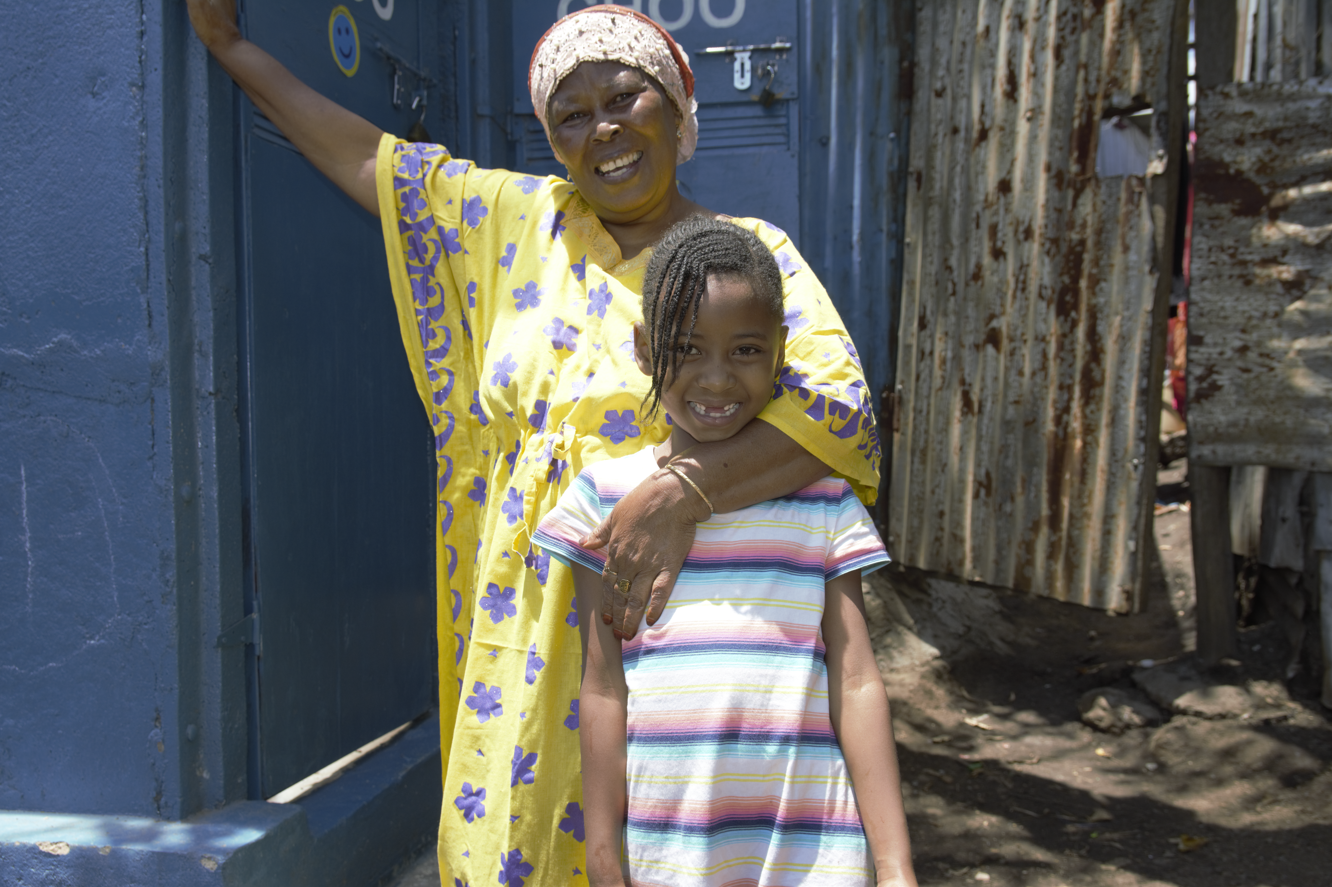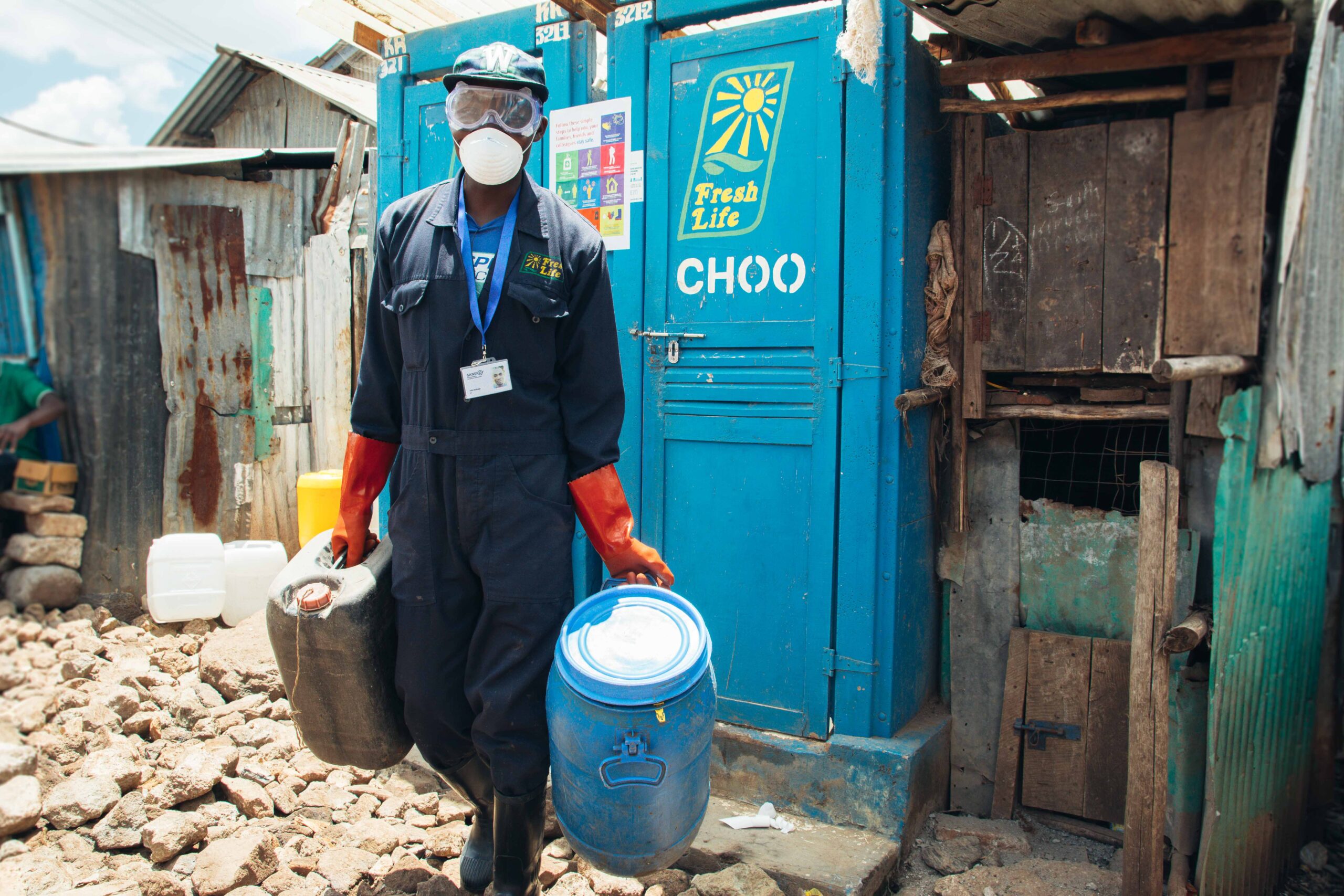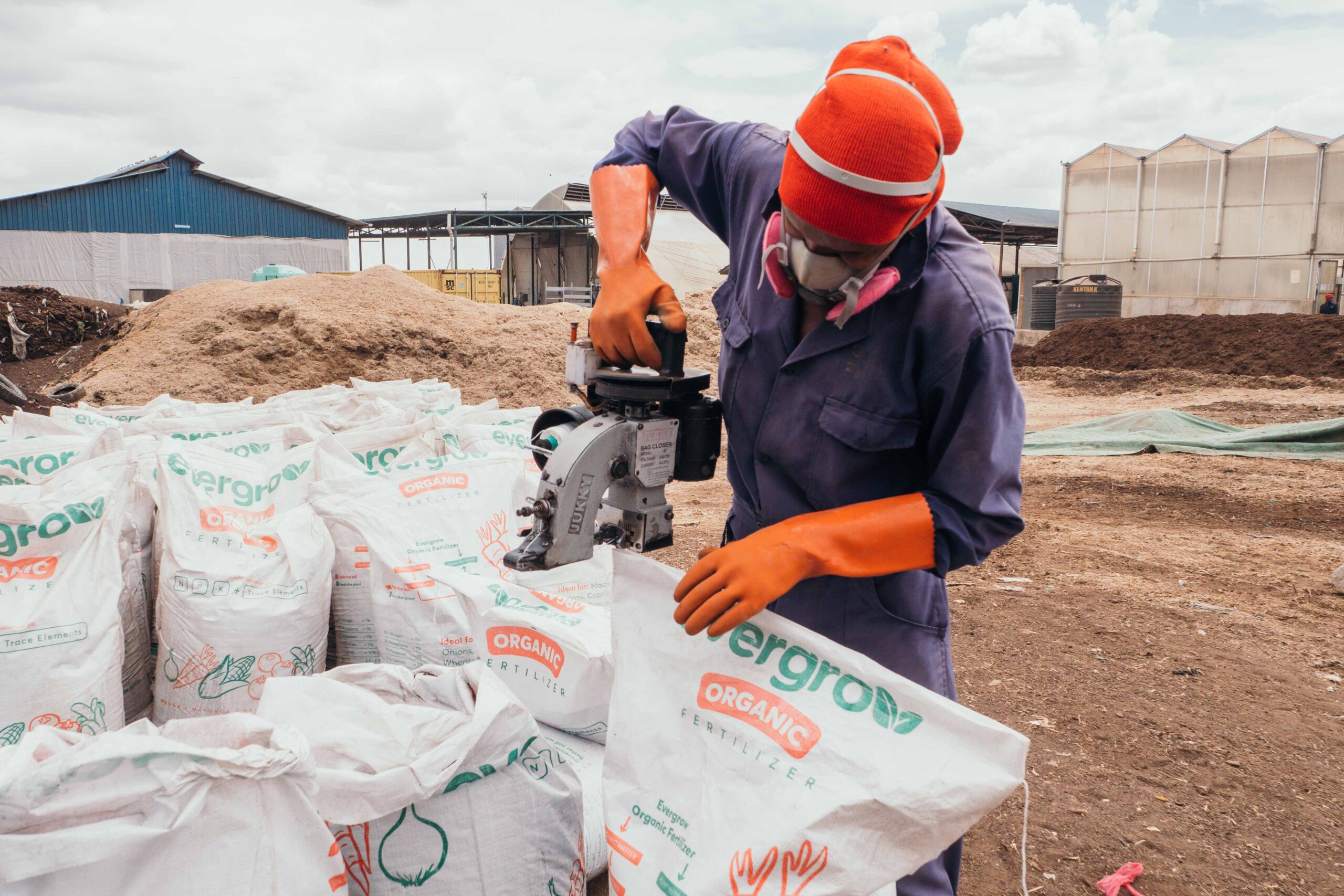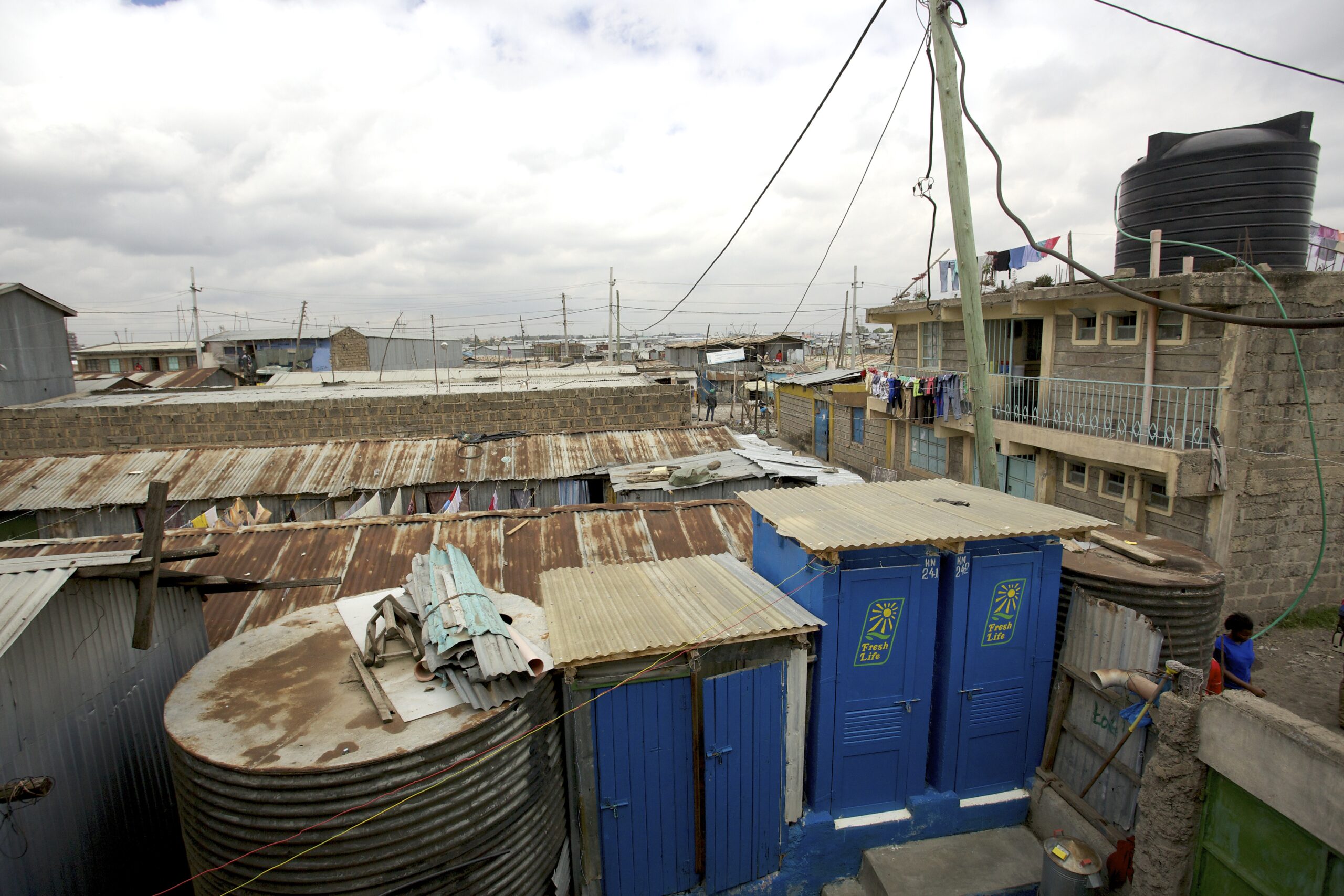
The potential of circular sanitation systems in building healthy, adaptive, climate-resilient cities

Hadija, an entrepreneur, mother, and grandmother of four (pictured above), has lived in Kenya’s capital Nairobi for over 30 years. She loves the cultural diversity and numerous business opportunities the city offers her. On the other hand, she is worried about the increasing social challenges facing her community. She is particularly concerned about inadequate healthcare, water, and sanitation services following the rapid population growth. This is why she invested in dry container-based toilets for her family two years ago.
Climate change and sanitation: A rising global challenge
In the world today, more than half of the global population (55%) lives in cities. Around one billion people live in densely packed informal settlements. As a result, there is a stark absence of infrastructure and systems to meet the ever-increasing demand for basic services. Access to safe water and sanitation is particularly lacking and the statistics are staggering: on average, 1 in 4 people still lack safely managed drinking water in their homes and nearly half the world’s population lacks safely managed sanitation.
Climate change exacerbates this challenge. Erratic weather conditions characterized by floods and droughts impact sanitation systems in cities. In Kenya, one of the world’s water-scarce countries, water-intensive solutions have often led to closure of toilets when water to flush the toilets is unavailable. At the same time, floods wash away improperly managed sanitation waste resulting in massive environmental pollution and disease. Ultimately, public health is at risk without access to safe and adequate sanitation services for urban residents.
Despite this myriad of challenges, how can cities deliver safe, sustainable, and climate-resilient sanitation services?
 A Sanergy employee safely collects waste from a container-based Fresh Life toilet.
A Sanergy employee safely collects waste from a container-based Fresh Life toilet.
Sanergy’s solution: non-sewered sanitation
Over the last decade, Sanergy has delivered dry container-based solutions that urban residents like Hadija have adopted.
Built on the concept of the full value chain approach—build, contain, empty, transport, treat, and reuse—Sanergy delivers a suite of non-sewered sanitation products and services to the most underserved residents living in cities’ urban informal settlements. Serving Nairobi and Kisumu, two of Kenya’s large cities, Sanergy has distributed nearly 5,000 sanitation units that reach more than 140,000 urban residents every single day.
At the same time, Sanergy cleans up these cities through the safe and professional collection of sanitation and all other forms of organic waste generated – around 40,000 tons of it each year. Using an organized logistics network, all of this waste is taken to a processing plant for upcycling into regenerative products like animal feed, organic fertilizer, and biofuels. These resources then help address food security by improving yields and increasing farmers’ incomes.
 Sanergy recycles waste to produce high-quality organic fertilizer that restores soil fertility.
Sanergy recycles waste to produce high-quality organic fertilizer that restores soil fertility.
The promise of circular sanitation
Sanergy’s model largely harnesses the power of the circular economy to solve multiple social, economic, environmental, and climate challenges facing cities simultaneously. It has created more than 2,000 jobs and offsets a significant amount of harmful carbon emissions – about 50,000 tons each year.
It is designed to evolve as cities grow and can be replicated around the world as an integrated approach to inclusive sanitation, urban development, and climate mitigation. As such, Sanergy aims to work with municipalities across African cities to sustainably reach everyone, everywhere with safe and circular sanitation systems!
 Sanergy has installed over 4,000 Fresh Life Toilets across 11 informal settlements in Nairobi.
Sanergy has installed over 4,000 Fresh Life Toilets across 11 informal settlements in Nairobi.


